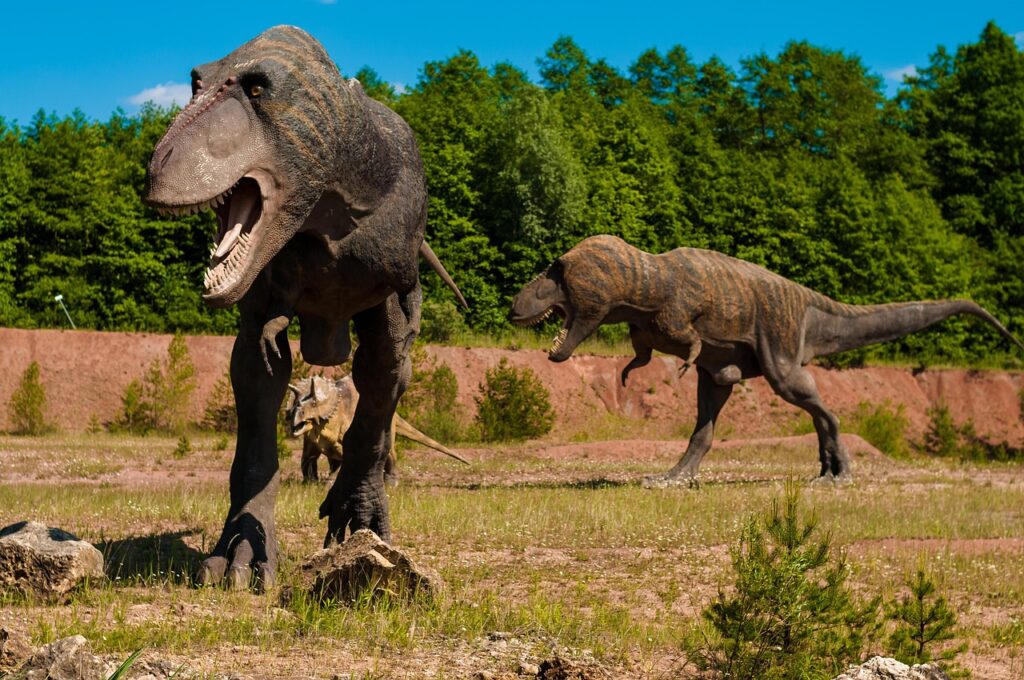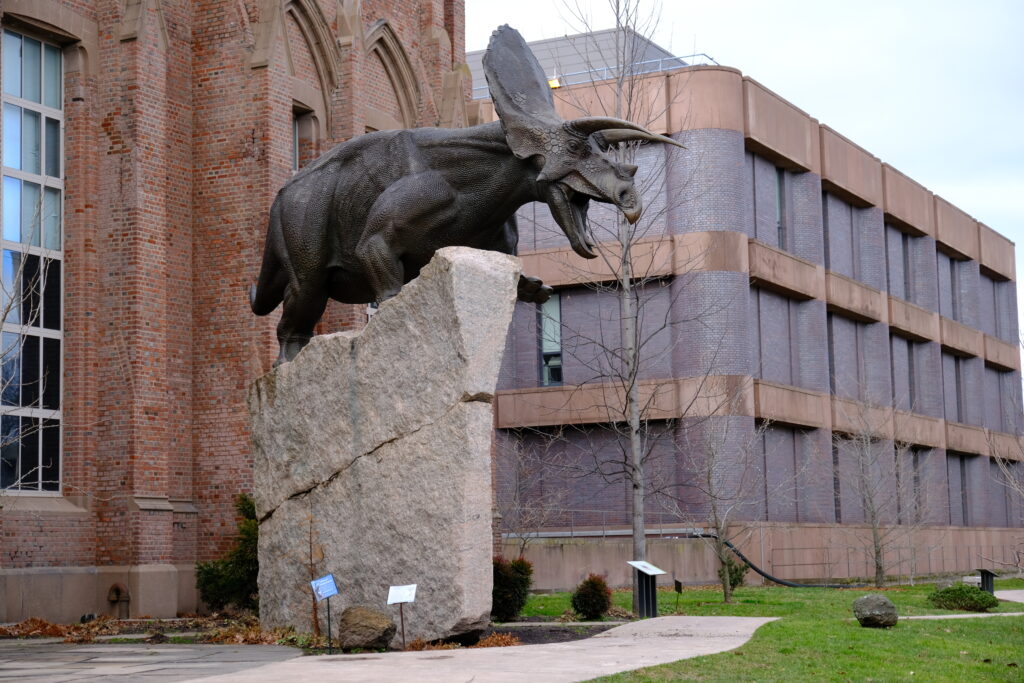Imagine a creature so massive it could swallow a great white shark whole, with jaws that could crush a car and flippers powerful enough to propel its serpentine body through ancient seas at breathtaking speeds. This wasn’t the stuff of nightmares or Hollywood fiction—this was the reality of our planet’s oceans 100 million years ago, when mosasaurs ruled the marine world with an iron grip that lasted for over 30 million years.
When Lizards Conquered the Seas
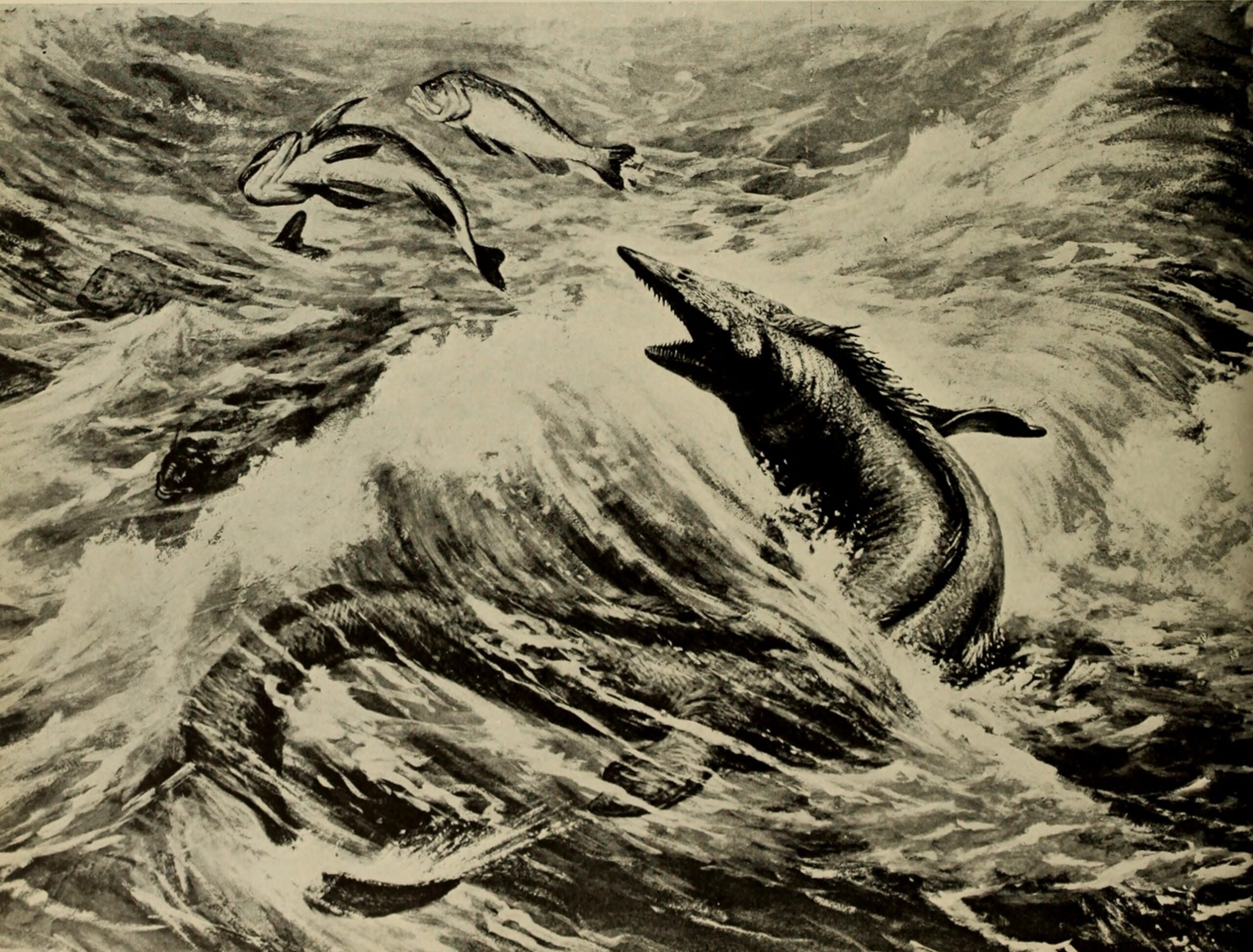
The story of mosasaurs begins not in the ocean, but on land, where their ancestors lived as ordinary lizards scurrying through prehistoric forests. Around 100 million years ago, during the late Cretaceous period, some of these terrestrial reptiles made a revolutionary decision that would change the course of marine evolution forever. They abandoned their four-legged existence and ventured into the vast, unexplored waters of ancient seas.
This transition wasn’t sudden—it was a gradual process that took millions of years of evolutionary fine-tuning. Early mosasaurs like Dallasaurus still retained functional limbs and could probably haul themselves onto beaches like modern seals. But as time progressed, these marine pioneers developed increasingly sophisticated adaptations that transformed them into the ultimate ocean predators.
The Anatomy of a Sea Monster
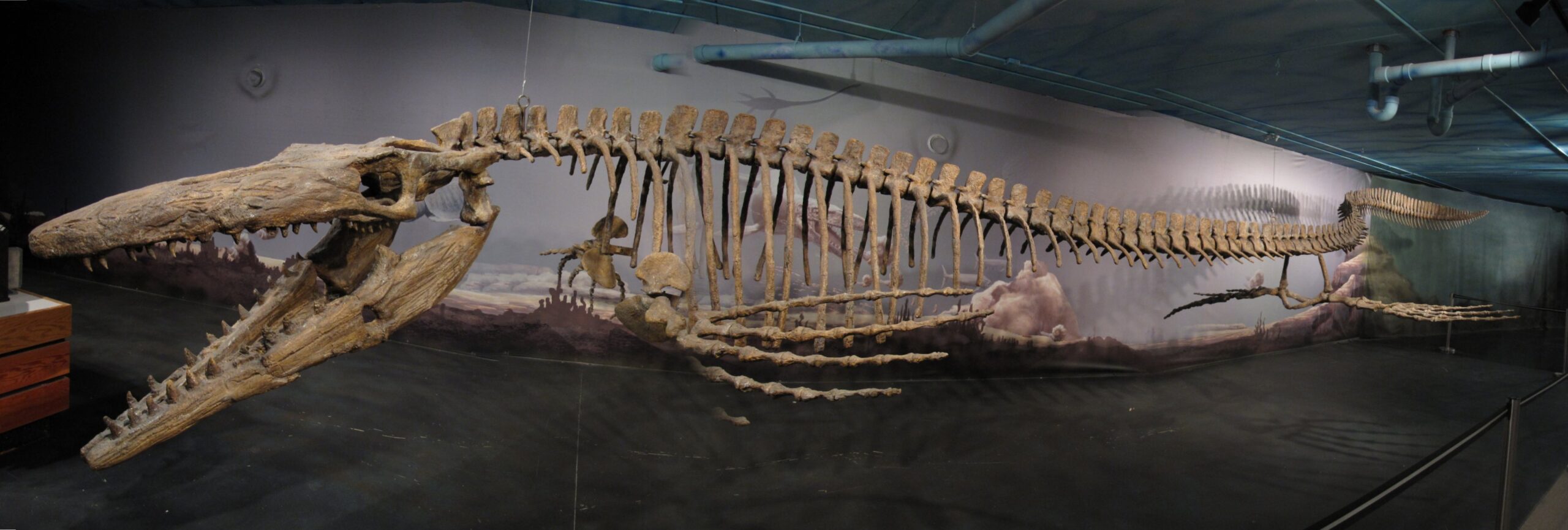
What made mosasaurs so terrifyingly effective was their perfect storm of predatory features. Their skulls alone could reach lengths of six feet, housing rows of razor-sharp, backward-curving teeth designed to grip struggling prey. Unlike sharks, which replace their teeth constantly, mosasaurs had a more complex dental system that allowed them to process a wider variety of food sources.
Their bodies were built like living torpedoes, with powerful tail flukes that could generate tremendous thrust through the water. The largest species, like Mosasaurus hoffmanni, stretched over 50 feet in length and weighed as much as a sperm whale. Their flippers weren’t just for steering—they were sophisticated hydrodynamic tools that allowed for precise maneuvering during high-speed chases.
Perhaps most remarkably, mosasaurs possessed double-hinged jaws that could unhinge like those of modern snakes, allowing them to swallow prey much larger than their head size would suggest. This feature, combined with their incredible bite force, made them virtually unstoppable in their aquatic domain.
Masters of Ancient Oceans
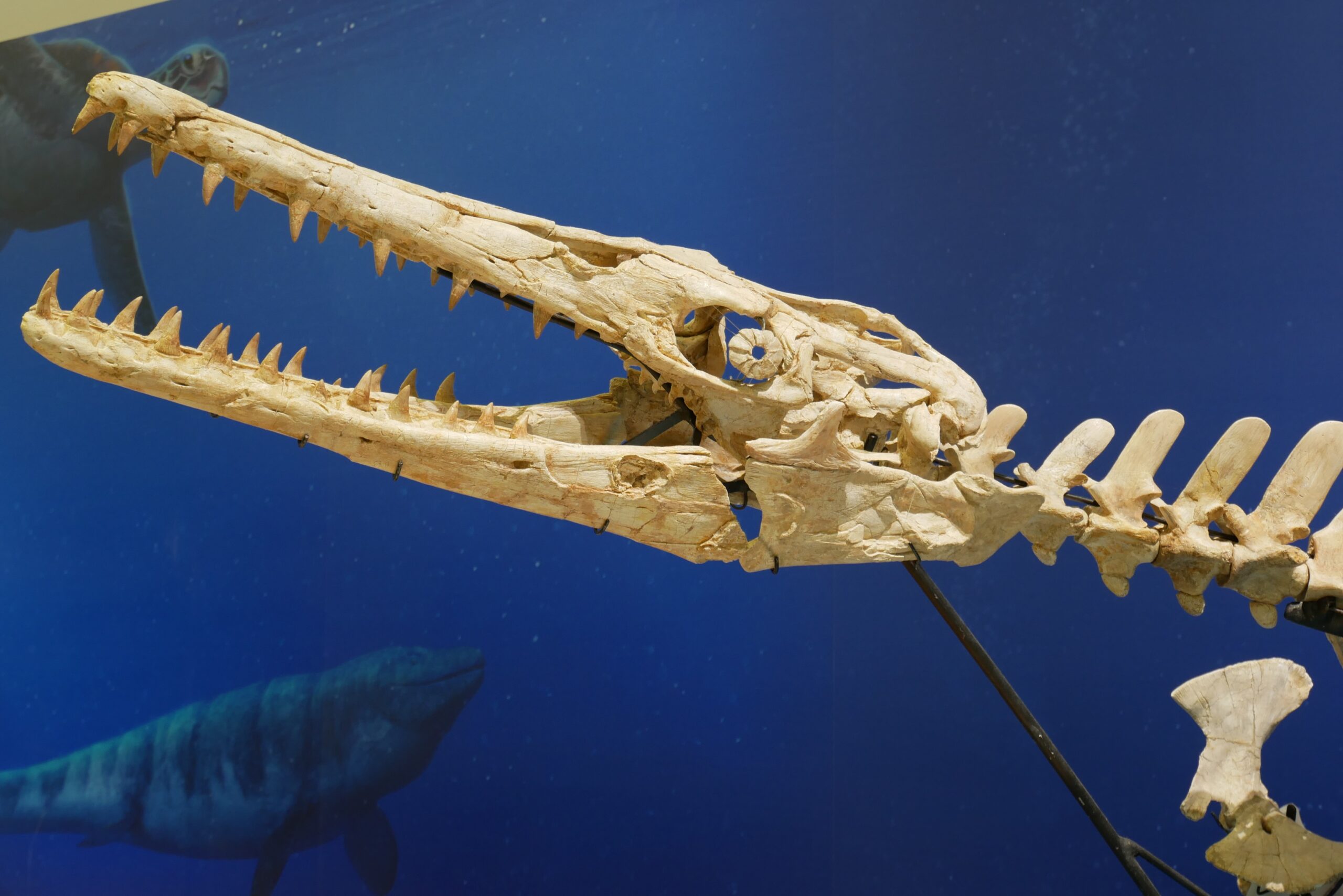
The Western Interior Seaway, a massive body of water that once split North America in half, served as the perfect hunting ground for these marine giants. This ancient sea teemed with life—ammonites spiraled through the water columns, marine reptiles like plesiosaurs glided through the depths, and countless species of fish filled every available niche.
Mosasaurs adapted to exploit virtually every marine environment. Some species specialized in shallow coastal waters, using their powerful builds to crush hard-shelled prey like sea turtles and large ammonites. Others ventured into the open ocean, where they hunted fast-moving fish and smaller marine reptiles with lightning-quick strikes.
Their success was so complete that they essentially replaced other marine reptiles as the dominant predators of their time. Where once ichthyosaurs and long-necked plesiosaurs had ruled, mosasaurs now claimed the throne, establishing themselves as the apex predators of the Cretaceous seas.
The Hunting Strategies of Ocean Titans
Mosasaurs weren’t just massive—they were intelligent hunters with sophisticated strategies. Fossil evidence suggests they employed ambush tactics, using their excellent eyesight to spot prey from considerable distances. Some species developed specialized hunting techniques, like the smaller Clidastes, which appeared to have been pursuit predators that chased down fast-moving fish in marathon underwater hunts.
The larger species, however, seemed to prefer a more direct approach. Mosasaurus and its relatives likely used their massive bulk to overwhelm prey, striking with the force of a freight train. Bite marks on fossilized sea turtle shells tell a violent story of encounters between these giants and their unfortunate victims.
A Global Empire Beneath the Waves
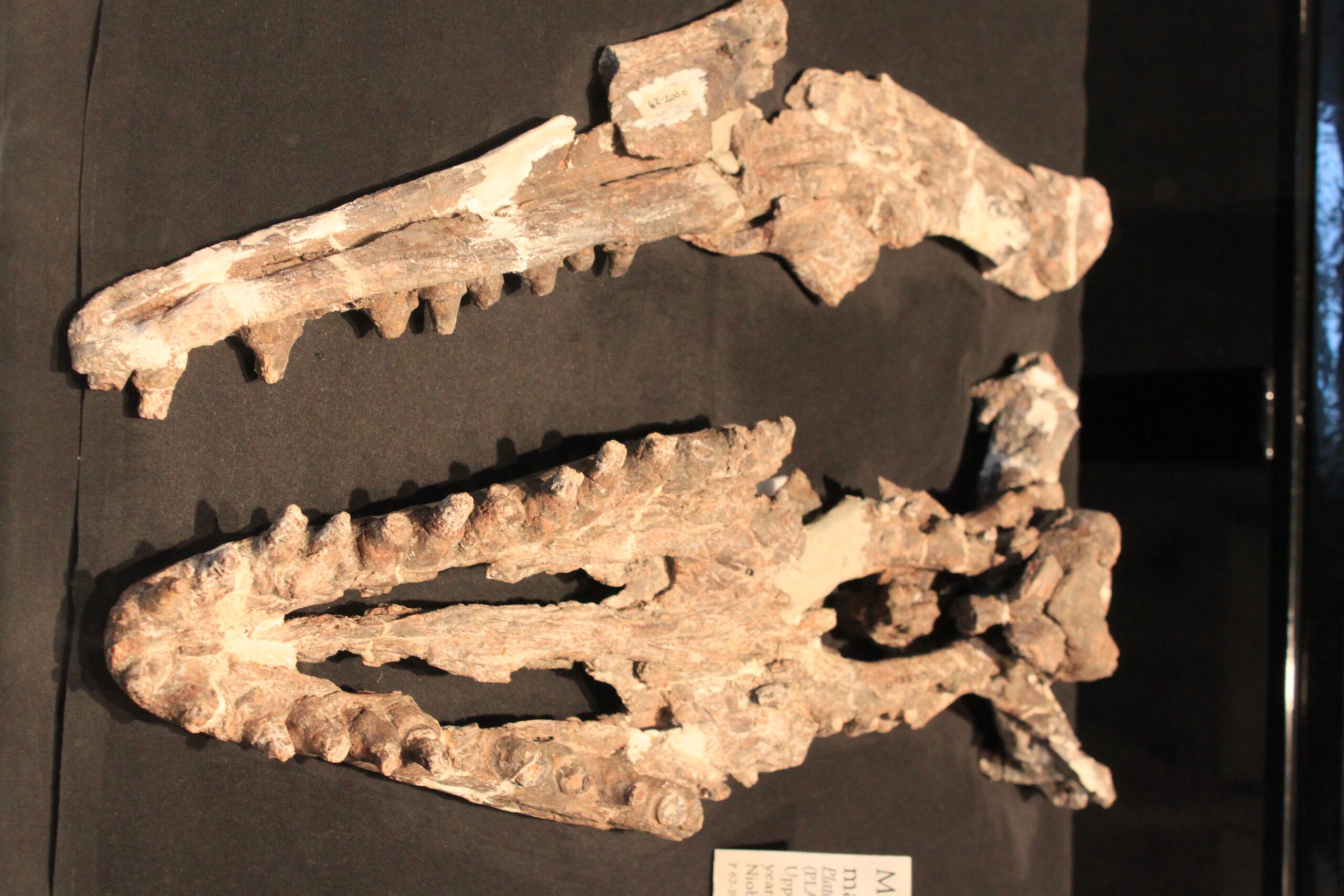
The success of mosasaurs wasn’t limited to a single region—they achieved global dominance that spanned continents. Fossil discoveries from Kansas to Morocco, from Australia to Antarctica, reveal that these marine reptiles had conquered virtually every ocean on Earth. Each region developed its own unique species, adapted to local conditions and prey availability.
In the phosphate mines of Morocco, paleontologists have uncovered some of the most spectacular mosasaur fossils ever found, including species with bizarre adaptations like elongated snouts for catching fish or crushing teeth for processing hard-shelled prey. These discoveries paint a picture of incredible diversity within the mosasaur family tree.
The fact that mosasaurs could spread across such vast distances speaks to their remarkable adaptability and swimming prowess. Unlike their terrestrial relatives, these marine giants weren’t constrained by geographic barriers—the entire ocean was their highway.
The Diversity Explosion
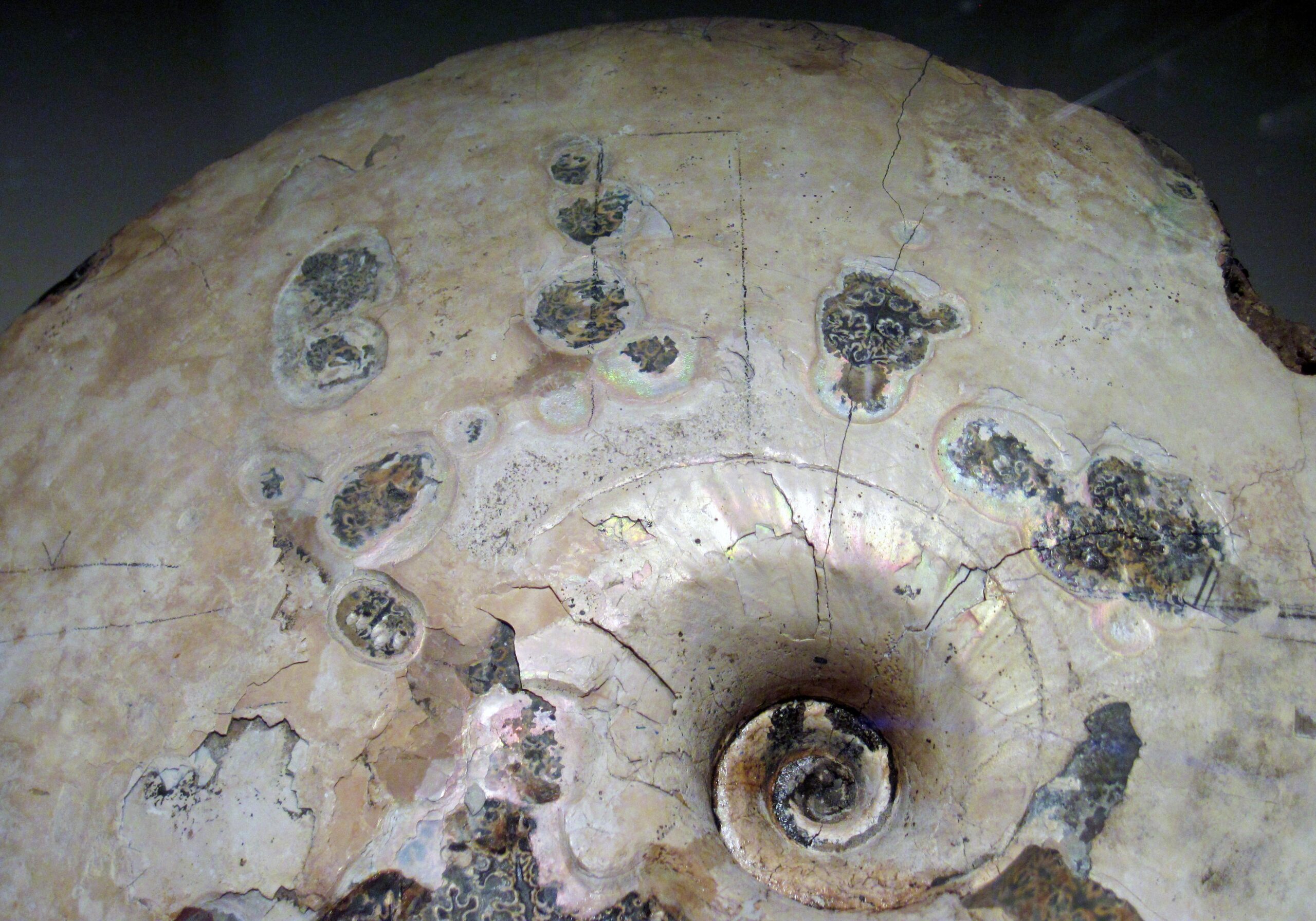
What truly set mosasaurs apart was their explosive diversification into numerous ecological niches. The mosasaur family tree includes everything from sleek, dolphin-like forms to massive, whale-sized behemoths. Species like Platecarpus had relatively small heads and streamlined bodies, suggesting they were built for speed and agility in pursuit of quick prey.
On the opposite end of the spectrum, giants like Tylosaurus stretched over 45 feet in length and possessed massive, crushing jaws capable of taking down other large marine reptiles. Some species even developed specialized feeding strategies—Globidens had rounded, crushing teeth perfect for breaking open ammonite shells, while others retained the sharp, piercing teeth of generalist predators.
This incredible diversity allowed mosasaurs to fill virtually every available predatory niche in the marine ecosystem, from small fish-eaters to massive apex predators that had no natural enemies except each other.
Life in the Cretaceous Seas
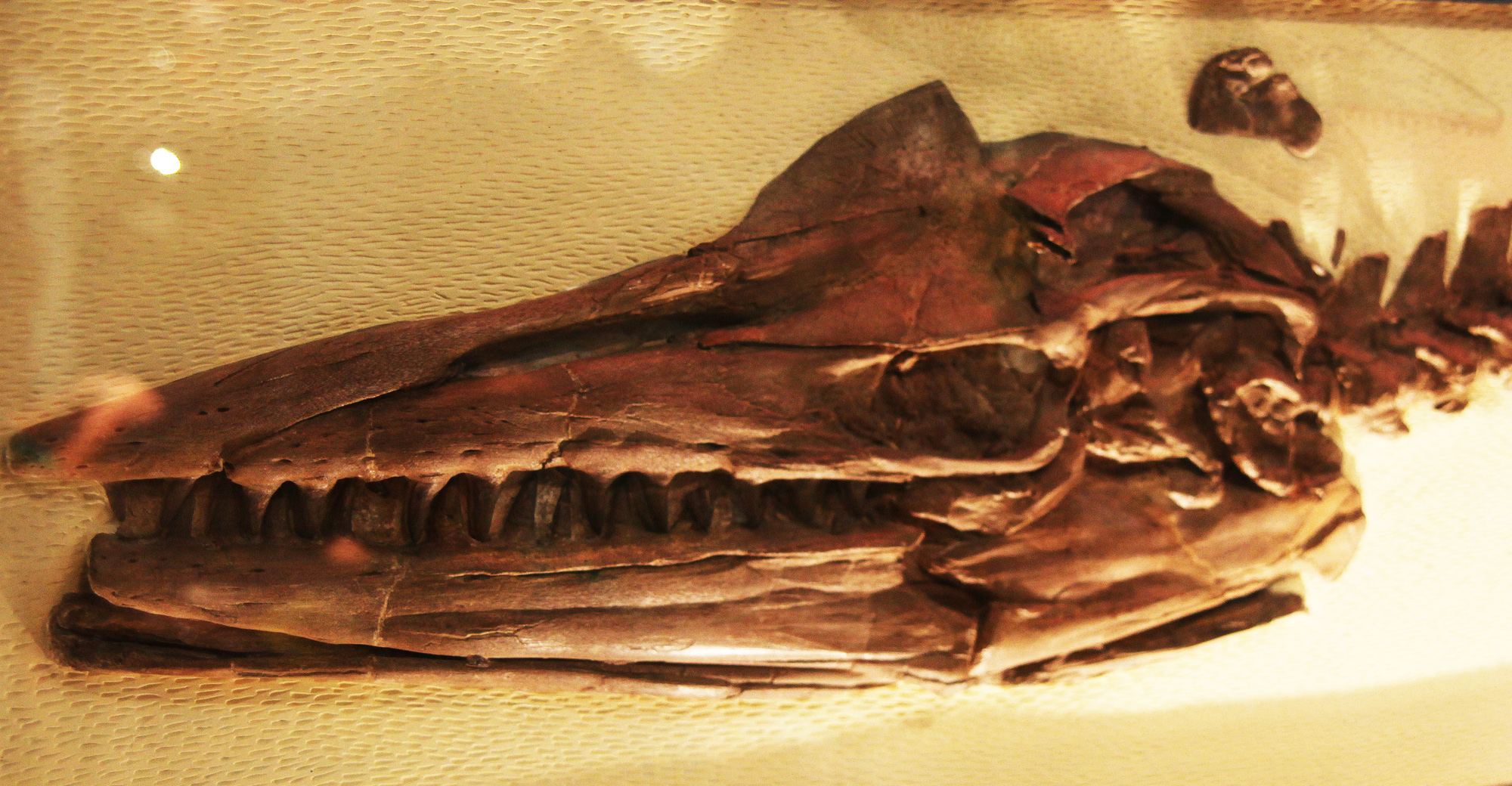
The world that mosasaurs inhabited was dramatically different from today’s oceans. Global temperatures were much higher, and there were no polar ice caps to speak of. Sea levels were at their highest in Earth’s history, creating vast shallow seas that provided perfect nursery areas for marine life.
These warm, tropical seas were incredibly productive, supporting massive populations of marine organisms. Microscopic plankton formed the base of food webs that supported everything from tiny fish to enormous marine reptiles. The absence of large whales and dolphins meant that mosasaurs faced little competition for the role of apex marine predator.
Volcanic activity was also intense during this period, periodically enriching the oceans with nutrients that supported explosive population growth among marine organisms. This created a perfect storm of conditions that allowed mosasaurs to thrive and diversify at an unprecedented rate.
The Competition and Coexistence
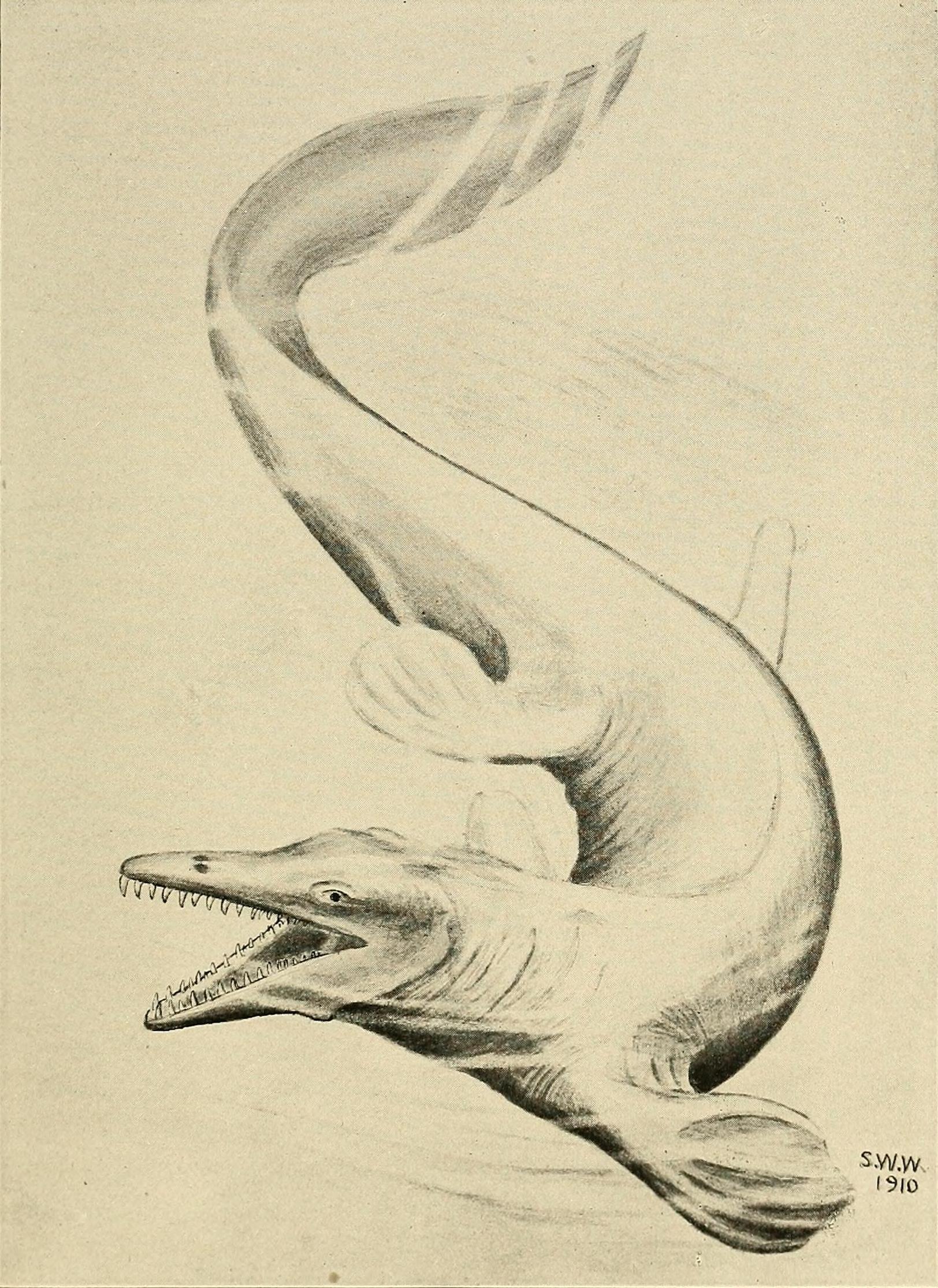
Despite their dominance, mosasaurs didn’t have the ancient seas entirely to themselves. They shared their aquatic realm with other formidable marine reptiles, including long-necked plesiosaurs and the last surviving members of the ichthyosaur family. This created a complex web of predator-prey relationships and competition that shaped the evolution of all marine reptiles.
Some evidence suggests that different species of mosasaurs may have engaged in territorial battles, with bite marks on fossils indicating violent encounters between individuals of the same species. These prehistoric giants weren’t just competing with other marine reptiles—they were also competing with each other for the best hunting grounds and breeding territories.
The relationship between mosasaurs and their prey was equally complex. As mosasaurs grew larger and more sophisticated, their prey species also evolved new defensive strategies, creating an evolutionary arms race that drove innovation on both sides of the predator-prey equation.
Signs of Trouble in Paradise
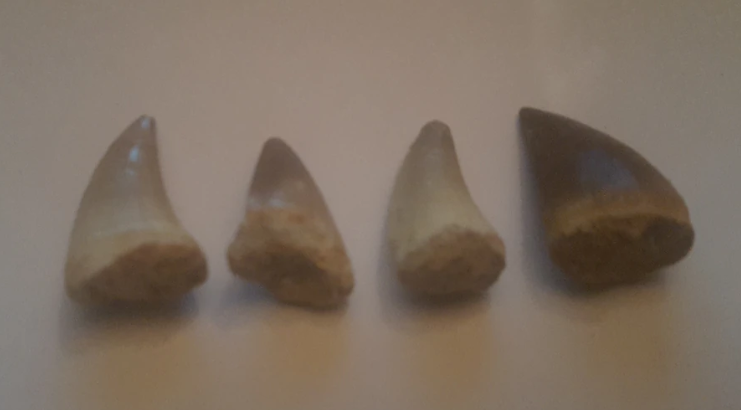
By the final few million years of the Cretaceous period, subtle changes began to appear in the fossil record that hinted at coming trouble for the mosasaur empire. Climate patterns were shifting, and the massive inland seas that had provided such rich hunting grounds were beginning to recede as global temperatures started to cool.
The diversity of mosasaur species, which had been steadily increasing for millions of years, began to level off and even decline in some regions. This wasn’t necessarily a sign of immediate crisis, but it suggested that the golden age of mosasaur dominance was beginning to wane.
Competition from other marine predators, including early marine mammals and increasingly sophisticated sharks, may have also begun to pressure mosasaur populations. The oceans were becoming more crowded, and the easy dominance that mosasaurs had enjoyed for so long was starting to face challenges.
The Asteroid’s Devastating Impact
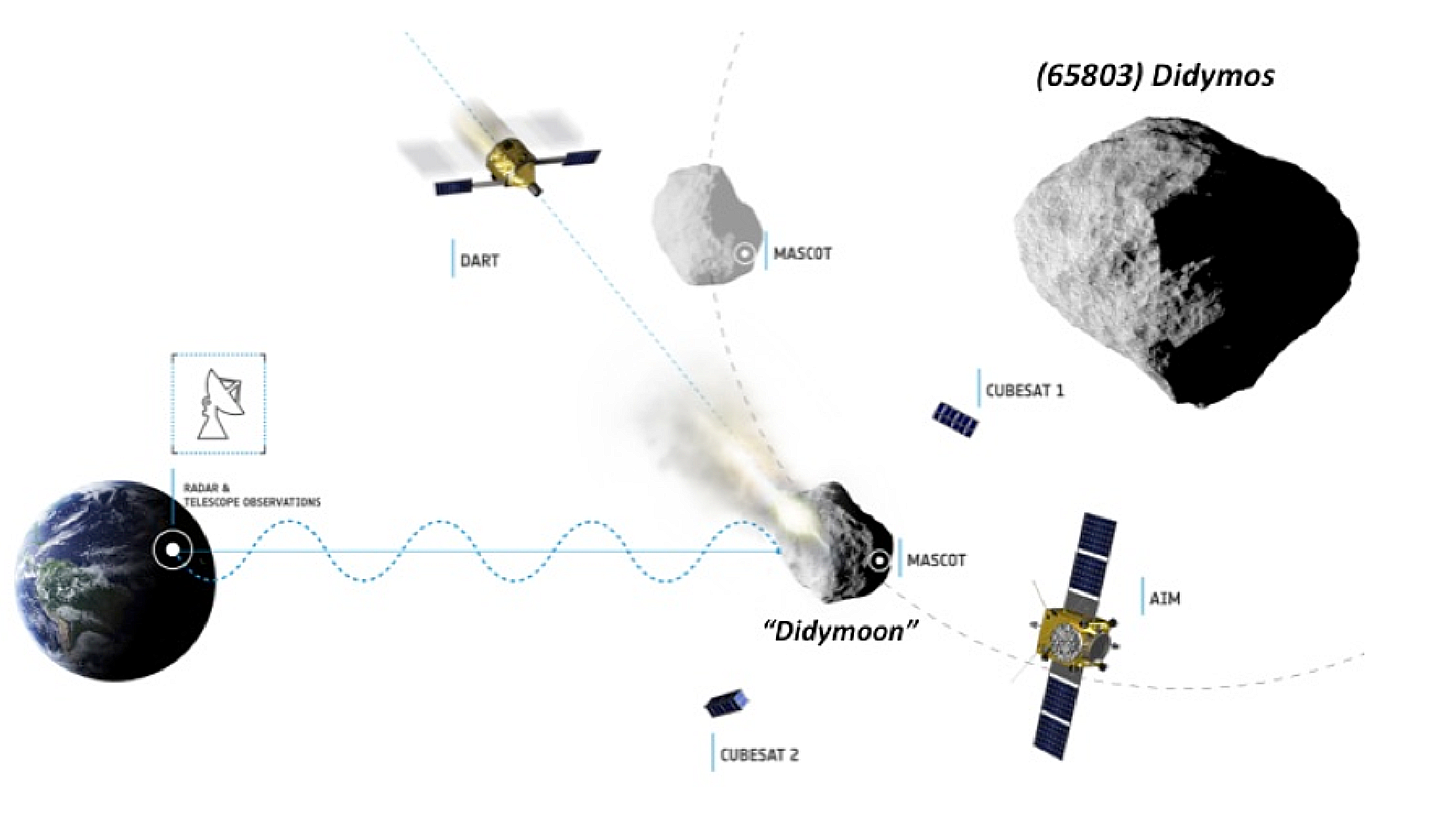
Then came the event that would change everything—the massive asteroid impact that occurred 66 million years ago at the end of the Cretaceous period. This cosmic collision, which left behind the famous Chicxulub crater in Mexico, unleashed devastation on a scale that’s difficult to comprehend.
The immediate effects were catastrophic: massive tsunamis swept across the globe, earthquakes shook the planet, and debris from the impact rained down like a hellish storm. But it was the long-term consequences that proved most deadly for marine ecosystems.
The impact threw so much debris into the atmosphere that it blocked sunlight for months or even years, causing a dramatic collapse in marine photosynthesis. This triggered a cascading collapse of ocean food webs, starting with the microscopic organisms that formed the base of the marine food chain and working its way up to the largest predators.
The Collapse of Marine Food Webs
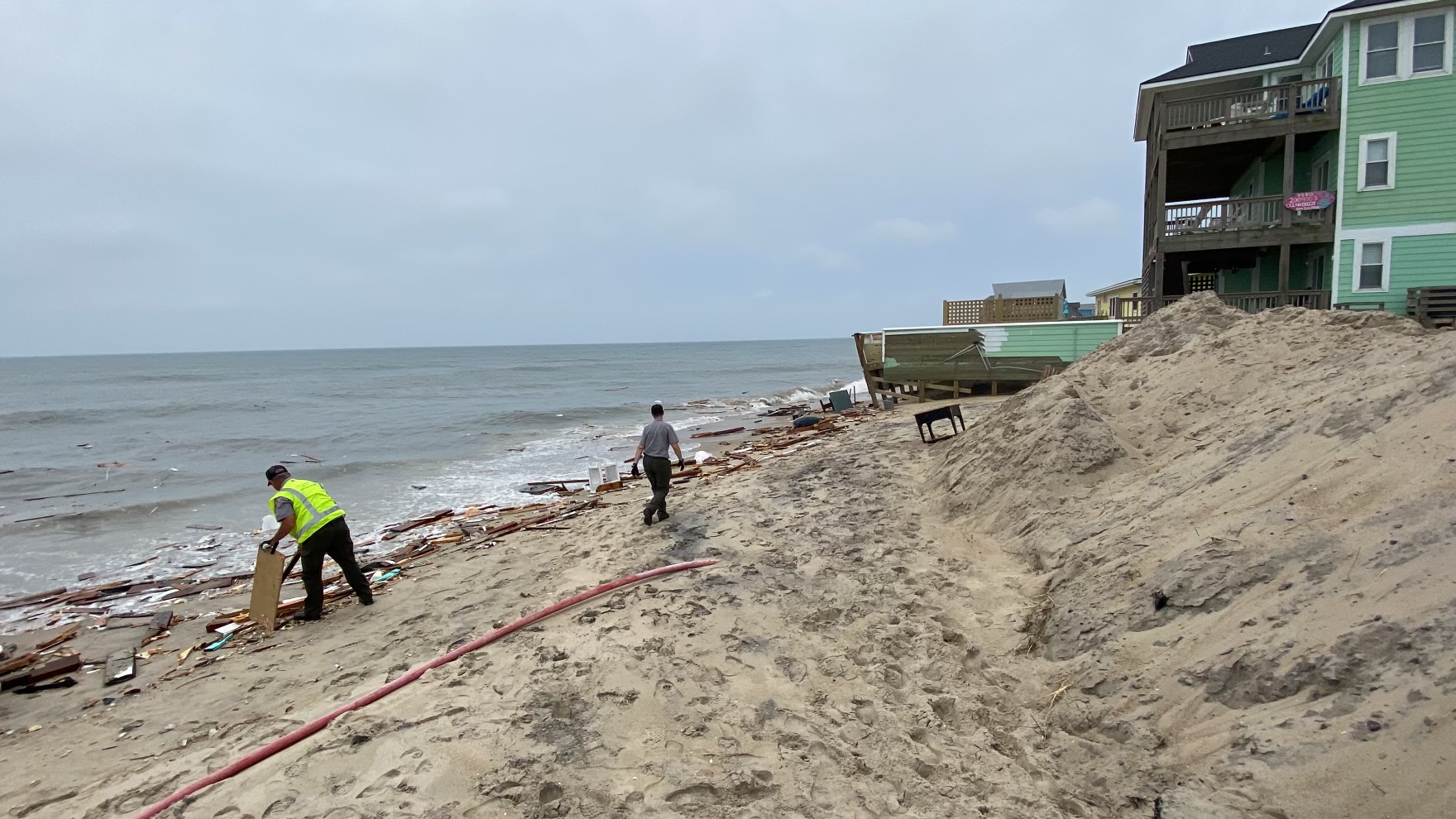
As the oceans plunged into darkness, the intricate food webs that had supported mosasaurs for millions of years began to collapse like a house of cards. The tiny plankton that formed the foundation of marine ecosystems died en masse, depriving small fish of their primary food source.
Without small fish, the medium-sized predators that mosasaurs relied on for food began to starve. This created a domino effect that worked its way up the food chain, eventually reaching the apex predators themselves. For creatures as large as mosasaurs, which required enormous amounts of food to sustain their massive bodies, this collapse was catastrophic.
The situation was made worse by the fact that mosasaurs were specialized marine predators with no ability to adapt to terrestrial environments. Unlike some other reptile groups that could temporarily switch to different food sources or habitats, mosasaurs were completely dependent on the marine ecosystem that was collapsing around them.
The Final Chapter
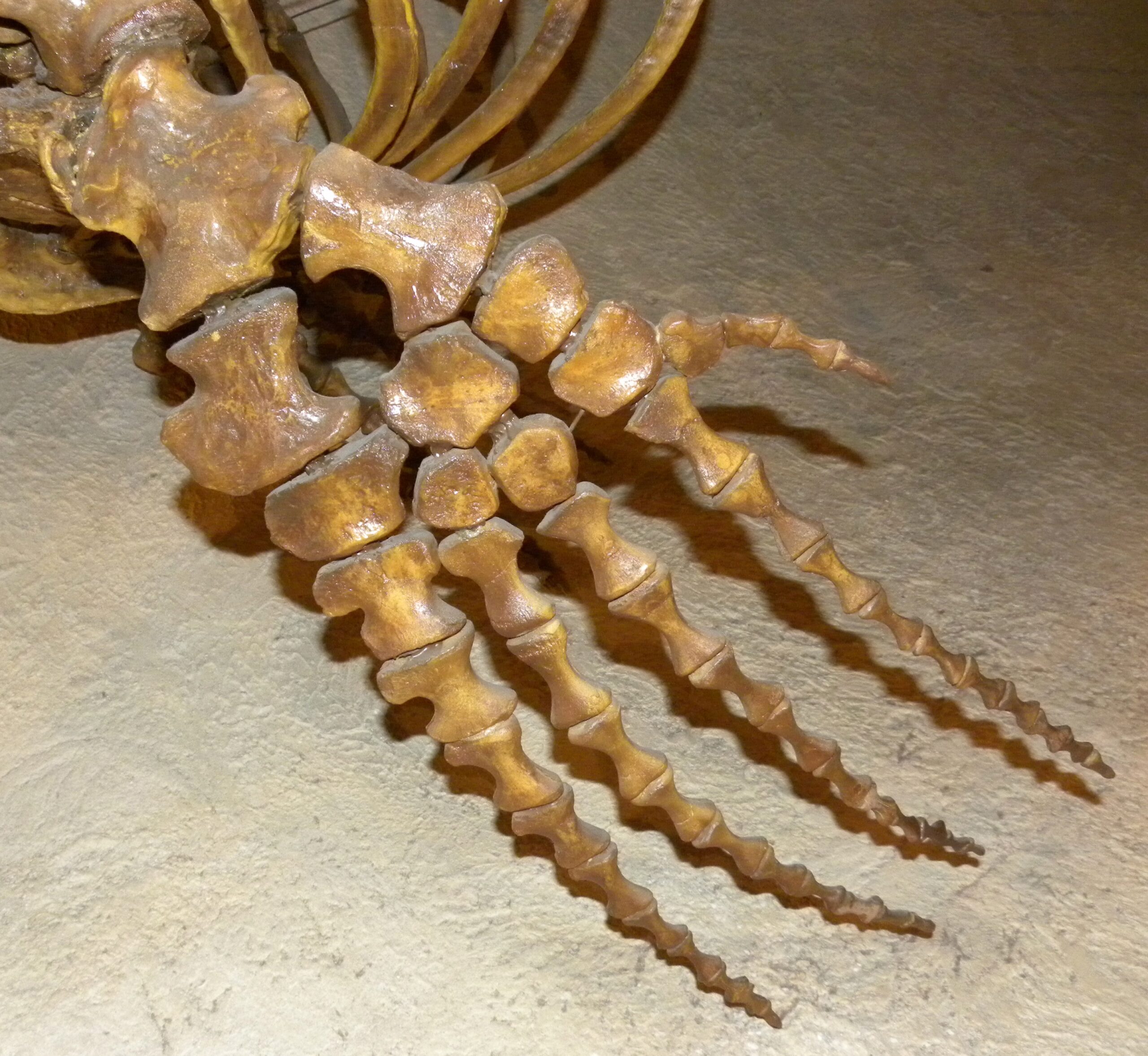
Within a few hundred thousand years of the asteroid impact—a blink of an eye in geological terms—the last mosasaurs had vanished from the fossil record. These magnificent creatures, which had ruled the seas for over 30 million years, were unable to adapt quickly enough to the rapidly changing conditions.
The extinction wasn’t immediate everywhere—some populations may have survived for thousands of years after the initial impact, clinging to life in isolated pockets where conditions remained more favorable. But eventually, even these refugia were overwhelmed by the changing world.
The disappearance of mosasaurs marked the end of an era in marine evolution. Never again would lizards achieve such dominance in marine environments, and the ecological niches they had filled would eventually be claimed by entirely different groups of animals, including marine mammals and modern sharks.
What the Fossils Tell Us
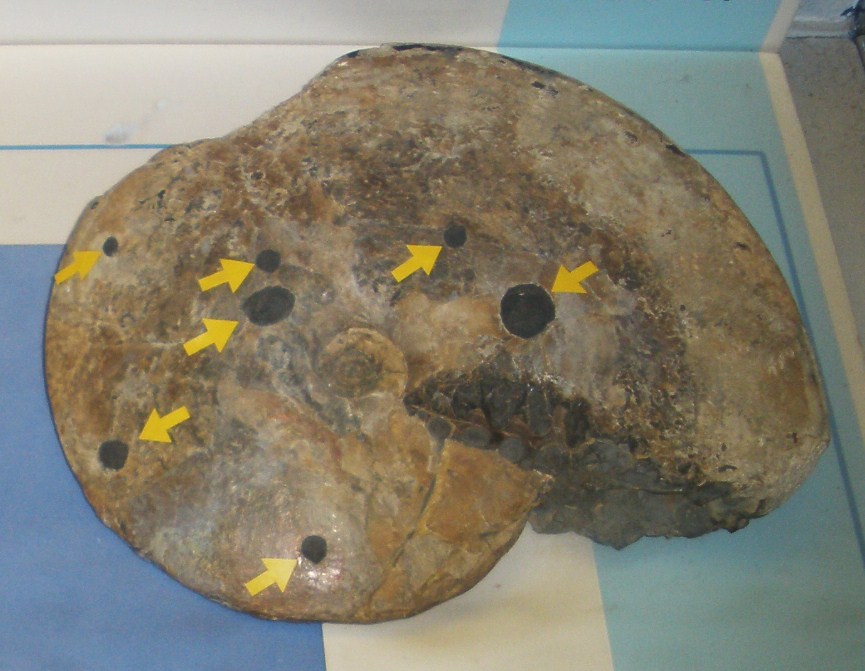
Today, mosasaur fossils continue to provide fascinating insights into both their lives and their extinction. Recent discoveries have revealed details about their metabolism, reproduction, and behavior that help us understand why they were so successful—and why they ultimately failed to survive the end-Cretaceous extinction.
Some of the most remarkable finds include pregnant mosasaur fossils that show they gave birth to live young, and evidence of parental care that suggests these giants had more complex behaviors than previously thought. Bite marks on fossils tell stories of fierce battles between rivals, while stomach contents reveal the diverse diets that allowed different species to coexist.
Perhaps most poignantly, the youngest mosasaur fossils show no signs of declining health or obvious evolutionary problems—these were thriving animals at the peak of their evolutionary success when the asteroid struck, making their extinction all the more tragic.
Lessons from the Ancient Seas
The story of mosasaurs serves as a powerful reminder of how quickly dominant species can disappear when faced with rapid environmental change. These creatures had survived ice ages, volcanic eruptions, and sea level changes over millions of years, yet they couldn’t adapt quickly enough to survive the aftermath of a single asteroid impact.
Their extinction also highlights the vulnerability of highly specialized species. While mosasaurs’ extreme adaptations to marine life made them incredibly successful predators, it also made them completely dependent on stable marine ecosystems. When those ecosystems collapsed, the mosasaurs had nowhere to turn.
Modern marine ecosystems face similar challenges from rapid environmental change, though this time the cause is human activity rather than asteroid impacts. The lessons from mosasaur extinction remind us that even the most successful species can be vulnerable to sudden changes in their environment.
The rise and fall of mosasaurs represents one of evolution’s most dramatic success stories and one of its most sobering tragedies. These incredible marine reptiles achieved a level of dominance in ancient seas that few predators have ever matched, yet their very success made them vulnerable to the catastrophic changes that ended the age of dinosaurs. Their story reminds us that in the grand theater of evolution, even the mightiest giants can fall when the curtain drops on their world. What other ocean rulers might we have missed in the fossil record, and what secrets do they still hold about survival in our ever-changing planet?



